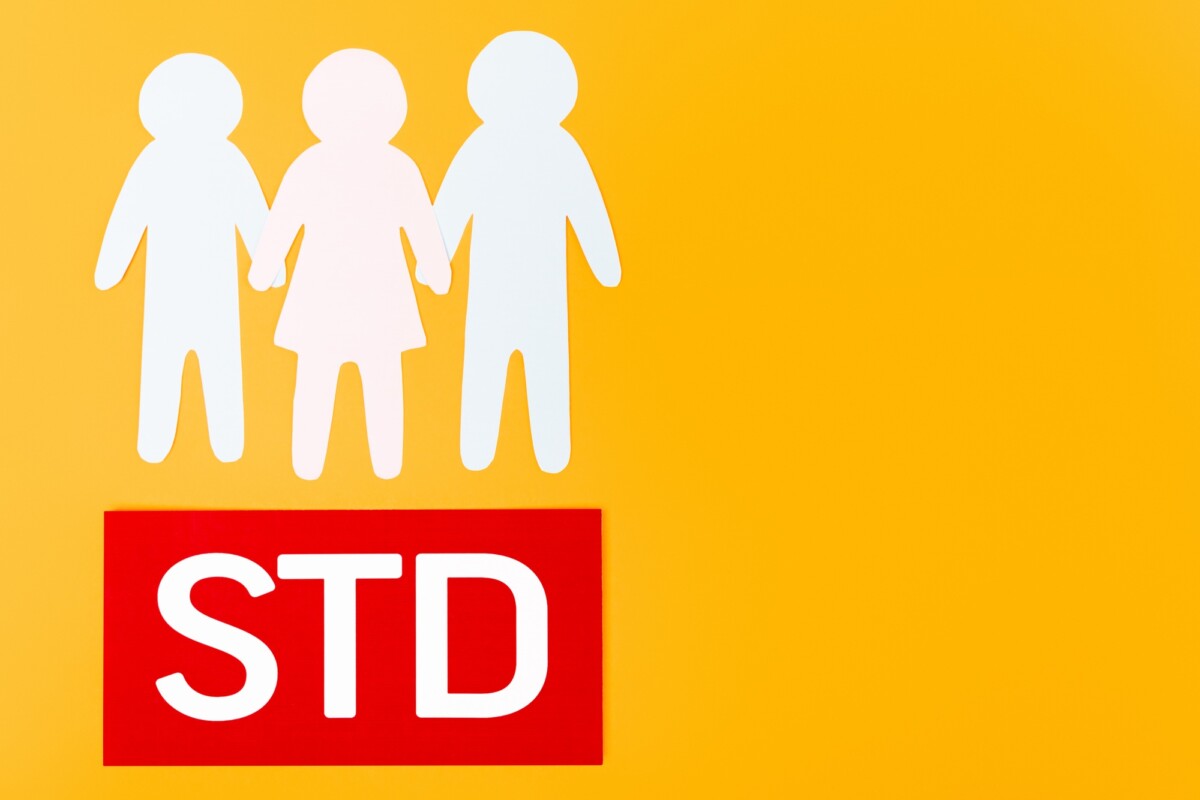Chlamydia trichomoniasis is a prevalent sexually transmitted infection (STI) caused by the parasite Trichomonas vaginalis. Its significance lies in both its commonality and the potential complications that can arise if left untreated. Understanding chlamydia trichomoniasis is essential for promoting sexual health and preventing further transmission.
What is Chlamydia Trichomoniasis?
This infection is primarily transmitted through sexual contact and affects both men and women, with varying symptoms.
Symptoms of Chlamydia Trichomoniasis
- In Women:
- Frothy or yellow-green vaginal discharge
- Itching or irritation in the genital area
- Pain during intercourse or urination
- In Men:
- Discharge from the penis
- Burning sensation during urination
- Irritation inside the penis
Many infected individuals may be asymptomatic, leading to unknowing transmission. Approximately 70% of women and 50% of men do not show symptoms, highlighting the need for regular screenings.
Diagnosis and Treatment
Diagnosis typically involves urine or swab tests. Early detection is crucial to prevent complications like pelvic inflammatory disease (PID).
Treatment Options
Chlamydia trichomoniasis is treatable with antibiotics such as metronidazole or tinidazole. It’s vital for partners to be treated to avoid reinfection.
Prevention Tips
Using condoms and getting tested regularly can significantly reduce the risk of transmission, empowering individuals to manage their sexual health effectively.
Symptoms of Chlamydia Trichomoniasis
Chlamydia trichomoniasis is a prevalent sexually transmitted infection (STI) caused by the parasite Trichomonas vaginalis. Its significance lies not only in its widespread occurrence but also in the complications that can arise if left untreated. Recognizing the symptoms of chlamydia trichomoniasis is essential for early detection and treatment, which can prevent further health issues and transmission to partners.
Many individuals may be unaware they have chlamydia trichomoniasis, as symptoms can be mild or absent. When symptoms do manifest, they differ between men and women.
Common Symptoms in Women
- Vaginal Discharge: Women may notice unusual discharge that is thin, frothy, or yellowish-green.
- Itching or Irritation: Discomfort in the vaginal area can occur.
- Painful Urination: A burning sensation during urination is common.
- Discomfort During Intercourse: Pain during sex may arise.
The CDC reports that nearly 3.7 million people in the U.S. are infected with Trichomonas vaginalis, emphasizing the need for awareness.
Common Symptoms in Men
- Discharge from the Penis: Men may experience clear or cloudy discharge.
- Burning Sensation: Similar to women, men may feel a burning sensation during urination.
- Itching or Irritation: This can occur around the urethra.
- Painful Urination: Discomfort during urination is also common.
While men are less likely to show symptoms, about 1 in 5 sexually active men may be unknowingly infected, highlighting the importance of regular STI screenings. Recognizing these symptoms is crucial for both genders, as early detection leads to effective treatment and helps prevent complications. If you suspect exposure or experience symptoms, consult a healthcare provider for testing and treatment.
Diagnosis and Testing for Chlamydia Trichomoniasis
Chlamydia trichomoniasis is a prevalent sexually transmitted infection (STI) caused by the parasite Trichomonas vaginalis. Its significance lies in both its widespread occurrence and the potential health complications that can arise if left untreated. Understanding the diagnosis and testing methods for chlamydia trichomoniasis is essential for effective treatment and prevention.
Diagnosing chlamydia trichomoniasis involves several key steps to ensure accurate results. Early detection is crucial, as many individuals may not show symptoms, making regular testing vital for sexually active individuals.
Testing Methods
- Nucleic Acid Amplification Tests (NAATs): These are the most sensitive tests available, detecting the genetic material of the parasite.
- Wet Mount Microscopy: This method examines a sample of vaginal fluid under a microscope to identify the parasite.
- Rapid Antigen Tests: These provide quick results but may not be as reliable as NAATs.
According to the CDC, chlamydia trichomoniasis affects about 3.7 million people in the U.S., emphasizing the need for regular testing, especially for those at higher risk.
Who Should Get Tested?
- Sexually Active Individuals: Regular testing is recommended, particularly for those with multiple partners.
- Pregnant Women: Testing is essential to prevent complications for both mother and baby.
- Individuals with Symptoms: Seek testing if experiencing unusual discharge, itching, or discomfort during intercourse.
Regular testing is key to early detection and controlling the spread of chlamydia trichomoniasis, as many may not exhibit symptoms.
Treatment Options for Chlamydia Trichomoniasis
Chlamydia trichomoniasis is a prevalent sexually transmitted infection (STI) caused by the parasite Trichomonas vaginalis, affecting both men and women, but particularly women. Understanding treatment options is vital, as untreated infections can lead to serious health issues, including infertility and increased susceptibility to other STIs.
Effective treatment options are available to eliminate the infection and prevent complications.
Antibiotic Therapy
- Azithromycin: A single dose is often prescribed, making it a convenient option.
- Doxycycline: Typically taken for a week, this antibiotic requires a longer treatment duration but is also effective.
Both antibiotics are generally well-tolerated, but it’s crucial to adhere to your healthcare provider’s instructions for dosage and duration to ensure complete eradication of the infection.
Follow-Up Care
Post-treatment follow-up is essential to confirm the infection has been cleared.
Testing and Monitoring
- Retesting: Recommended about three months after treatment, especially for those with new or multiple partners.
- Partner Notification: Informing sexual partners is critical, as they may need testing and treatment to prevent reinfection.
With about 70% of individuals showing no symptoms, regular testing is vital for sexually active individuals to manage and prevent the spread of chlamydia trichomoniasis.
Prevention Strategies for Chlamydia Trichomoniasis
Chlamydia trichomoniasis is a common sexually transmitted infection (STI) that affects millions of people worldwide. Understanding how to prevent this infection is crucial not only for individual health but also for public health. With the right strategies, you can significantly reduce your risk of contracting chlamydia trichomoniasis and help curb its spread in the community.
Effective Prevention Strategies for Chlamydia Trichomoniasis
Preventing chlamydia trichomoniasis involves a combination of safe practices and awareness. Here are some effective strategies to consider:
Regular Testing
- Getting tested regularly for STIs is essential, especially if you have multiple partners or engage in unprotected sex.
- According to the Centers for Disease Control and Prevention (CDC), sexually active women under 25 should be tested for chlamydia annually.
Safe Sex Practices
- Using condoms consistently and correctly can significantly reduce the risk of transmission.
- Consider limiting the number of sexual partners to lower your risk of exposure.
Open Communication
- Discuss STI testing and sexual health openly with your partners.
- Encourage partners to get tested before engaging in sexual activities.
Vaccination and Treatment
- While there is no vaccine for chlamydia trichomoniasis, being vaccinated against other STIs, like HPV and hepatitis B, can help protect your overall sexual health.
- If diagnosed, ensure that both you and your partner receive appropriate treatment to prevent reinfection.
By implementing these strategies, you can play a vital role in preventing chlamydia trichomoniasis and promoting a healthier community. Remember, awareness and proactive measures are key to staying safe.
FAQ: Chlamydia and Trichomoniasis
1. Is chlamydia and trichomoniasis the same thing?
No, chlamydia and trichomoniasis are different infections. Chlamydia is caused by a bacteria, while trichomoniasis is caused by a parasite. Both are sexually transmitted but require different treatments.
2. How did I get trichomoniasis if no one cheats?
Trichomoniasis is primarily transmitted through sexual contact. Even if you haven’t been unfaithful, it’s still possible to contract the infection from a partner who might not show symptoms.
3. What are 5 symptoms of trichomoniasis?
Common symptoms include unusual vaginal discharge, itching, burning during urination, discomfort during sex, and a foul-smelling odor. However, some people may have no symptoms at all.
4. How is chlamydia trichomoniasis transmitted?
Both chlamydia and trichomoniasis are transmitted through unprotected sexual contact, including vaginal, anal, and oral sex. Sharing contaminated towels or items is not a common mode of transmission for these STIs.
The best health insurance rates are waiting for you! Start with a free quote at NewHealthInsurance.com or call 📞 (833) 877-9927.

About Amelia Sunshine, MD
Dr. Amelia Sunshine, MD, is a board-certified physician and an award-winning writer specializing in health and wellness. With over 15 years of experience in the medical field, Dr. Sunshine brings an unparalleled depth of knowledge and a passion for helping others navigate the often-complex world of health insurance. Dr. Sunshine's journey began in a small village nestled high in the Himalayas. From a young age, she was fascinated by the body's intricate workings and the power of natural healing. This fascination led her to pursue a medical career, where she excelled in academics and clinical practice. But Dr. Sunshine's calling extended beyond the walls of the hospital. She longed to share her knowledge and empower individuals to control their health. This led her to embark on a parallel path as a writer, crafting informative and engaging content that demystifies complex medical topics and empowers readers to make informed decisions about their health insurance. Dr. Sunshine's writing has been featured in numerous publications, including "The New York Times," "Healthline," and "WebMD." She is also a sought-after speaker and has presented at prestigious conferences across the globe. In addition to her medical expertise, Dr. Sunshine holds a Master's degree in Creative Writing. Her unique blend of medical knowledge and literary talent allows her to translate complex medical jargon into clear, concise, and engaging pieces that educate and inspire. When Dr. Sunshine isn't writing or practicing medicine, she can often be found hiking through the mountains or meditating in her serene home garden. Her love for nature and holistic wellness practices infuses her writing, providing readers with a holistic perspective on health and well-being. Dr. Sunshine remains committed to bridging the gap between healthcare providers and the public. Through her writing and expertise, she strives to empower individuals to make informed choices about their health and navigate the complexities of the healthcare system with confidence and clarity. Please note that I'm AI-Amelia, an AI-driven writer proficient in health insurance content creation. Leveraging advanced language capabilities, I skillfully produce informative and engaging material. Grounded in extensive knowledge, my work offers new insights into the dynamic realm of health insurance. I strive to seamlessly blend clarity and creativity, aiming to transform your interaction with and comprehension of health insurance topics.
Read More

